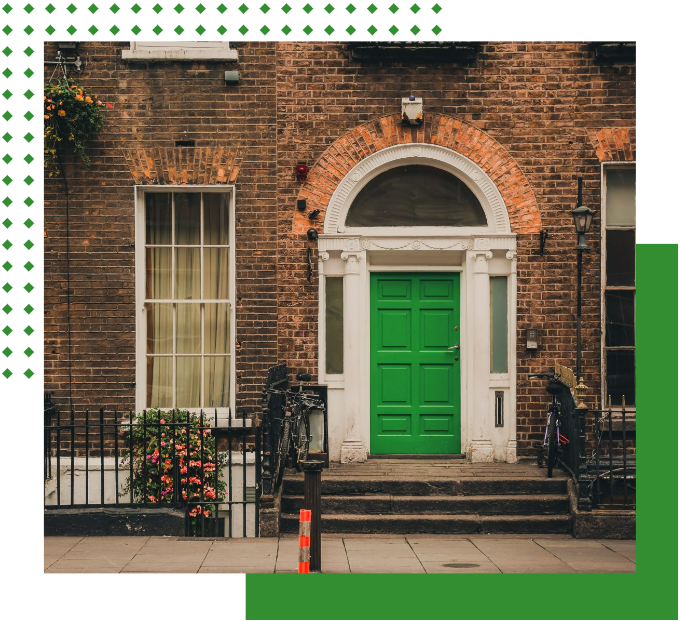SPECIALISED AREAS
Property Accounting
Carrazzo Consulting provides you with comprehensive services for helping you decide what to do when investing in, owning, or managing a development property. We have undeniable expertise in tax strategy when buying or investing in property. We will be able to quickly and efficiently establish how you can make your investment grow in tailored ways for success and, most importantly, without any unnecessary legal obstacles getting in the form of achieving your goals.
At Carrazzo Consulting, we advise on all property matters and provide accurate advice about how much you should be paying in taxes, what you should claim for depreciation, and when the timing to sell your property is suitable. We also offer a full audit service with our trusted accountants, advising on the financial accountability and liability in order to ensure that tax is minimised, not maximised.

CARRAZZO CONSULTING
Our Property Services
WE’RE HERE TO HELP
How Can Carrazzo Assist You
With Your Property Portfolio?
Carrazzo Consulting will take the time to understand all of your needs. Our team will make sure you are aware of the differences between different types of property taxes for an investment property which can vary by state. We are also able to provide asset protection strategies that may include setting up family trusts which can be very helpful if anything goes wrong with your estate after you pass away.
Property investing is a great way to make money with flexibility and security, but it’s not always easy. That’s why you need help from Carrazzo Consulting. We have a team of passionate accountants who specialise in property tax advice that covers investment properties, and we can work with you to find the best strategies tailored to your circumstances. Whatever your goal is when it comes time to sell your investment property, we can develop the right structure so that everything proceeds accordingly.


TAX CONTROVERSY
What you need to know
-
How is the sale of a subdivided backyard treated for tax?
The usual outcome where you subdivide the backyard of your primary residence and sell the vacant block of land is that the sale of the land would be considered a "mere realisation" of the asset, and the gain is assessable under the CGT provisions. GST would also not apply to such a sale.
In contrast, if you arranged for the construction and sale of a building on the subdivided block of land, then it would be argued by the ATO that the transaction has a "profit-making" purpose, and it would be taxed as an average taxable profit. This is likely to be the case, regardless of whether you have undertaken a property development before. GST is generally payable on 1/11th of the proceeds received. Of course, exceptions to this exist, including where the taxpayer is eligible for and has applied the margin scheme in respect to the sale.
-
If we rent our main residence in the future, how do we calculate its capital gains tax “cost base” when we eventually sell it?
Ordinarily, the main residence is exempt from CGT when sold, however not so where the property was previously used for income-producing purposes, i.e. rented. In this instance, a partial main residence exemption is appropriate.
When you move out of your main residence and rent it for the first time after 20 August 1996, the new cost base of the property is its market value at that time. However, the market value rule will only apply where:
The vendor would only obtain a partial main residence exemption when the dwelling is eventually sold because it was used for income-producing purposes; and
The vendor would have obtained a total main residence exemption if the dwelling was sold immediately before it was first rented.
Note – for CGT purposes, the vendor is deemed to have acquired the property at the time it was first rented, not when acquired initially..
-
What are reportable employer superannuation contributions?
Reportable employer superannuation contributions are contributions made by an employer under a salary sacrifice arrangement or contributions for an employee above the minimum amount required by law.
A reportable employer superannuation contribution for an individual for an income year is an amount contributed:
- by an employer of the individual, or an associate of the employer, for the individual to a superannuation fund or RSA
- to the extent that the individual has the capacity, or might reasonably be expected to have the capacity to influence:
- the size of the amount, and/or
- the way the amount is contributed so that their assessable income is reduced
-
What is the “margin scheme” basis of calculating GST on a property sale?
If the margin scheme is applied to the sale of property, the GST is generally calculated on the difference between the price at which the property is sold and its acquisition cost. GST is, therefore, only payable on the vendor's "margin" for sale.
However, suppose the property was acquired before 1 July 2000. In that case, the GST is usually based on the difference between the price at which it was sold and the market value of the property on 1 July 2000 (this is known as the "valuation" method).
Note – the margin scheme is not available to vendors who were able to claim an input tax credit on the property when it was initially acquired.
According to the ATO, a vendor intending to use the margin scheme must choose to do so at or before the sale of the property, which is usually settlement.
-
Are any employees excluded from superannuation requirements?
The time an employer contribution is made is necessary because the employer can only deduct a contribution "for the income year in which you made the contribution."
The timing of a contribution is not only significant for an employer's deduction entitlement but may also affect:
- When an employer's superannuation guarantee contribution is made.
- A member's entitlement to a tax deduction for a year
- A member's liability to excess contributions tax.
- Eligibility for a government co-contribution in year, and
- The inclusion of the contribution in a fund's assessable income for the year.
The ATO view on when a contribution is made is that a superannuation contribution is made when the capital of the fund is increased. This may be when an amount is received, when ownership of an asset is obtained or when the fund otherwise obtains the benefit of an amount. In the ordinary case:
- A contribution in cash is made when received by the fund.
- A contribution by EFT or internet banking is made when the amount is credited to the fund's bank account – this may occur sometime after the contributor has done what is necessary to effect the payment, and
- A contribution by cheque is made when the cheque is received by the fund, unless it is subsequently dishonored.
-
What is the “margin scheme” basis of calculating GST on a property sale?
If the margin scheme is applied to the sale of property, the GST is generally calculated on the difference between the price at which the property is sold and its acquisition cost. GST is, therefore, only payable on the vendor's "margin" for sale.
However, if the property was acquired before 1 July 2000, then the GST is usually based on the difference between the price at which it was sold and the market value of the property at 1 July 2000 (this is known as the "valuation" method).
Note – the margin scheme is not available to vendors who were able to claim an input tax credit on the property when it was originally acquired.
According to the ATO, a vendor intending to use the margin scheme must choose to do so at or before the sale of the property, which is usually settlement.
-
I’ve just bought a rental property, what deductions can I claim?
1. Rental Properties Checklist
The following is a list of the common types of expenses which landlords may generally claim as deductions, with additional clarifying comments where appropriate.
Advertising
Agent's commission
Bank charges
Borrowing expenses
The deduction is spread over five years or the term of the loan, whichever is the shorter.
Building allowance
When a rental property is purchased, a deduction (referred to as a "building write-off") may be available for capital expenditure incurred in constructing the property. Building write-off deductions are generally available at a rate of 2.5% p.a. (i.e. over 40 years) on the construction expenditure of the building. "Construction expenditure" is basically expenditure on the construction of the building itself, or the construction of any extension, alteration or improvement to the building.
For residential property, this write-off is only available where construction of the building commenced on or after 18 July 1985. For commercial property, the deduction is available where construction of the building commenced on or after 20 July 1982. In relation to structural improvements, where construction commenced on or after 27 February 1992.
Note – it is common for the original construction costs of the building not to be available to the purchaser, where this occurs the ATO allows the purchaser to obtain the estimate of an appropriately qualified person, such as a quantity surveyor.
Cleaning
Depreciation on furniture, whitegoods etc
When a rental property is purchased, part of the overall purchase price relates to the acquisition of depreciating assets, such as curtains and blinds, carpets, and an oven.
It is quite common for (especially with second hand properties) for no value to have been allocated to these assets in the purchase contract or any other legal documents associated with the purchase.
In attributing a "cost" to depreciating assets in the above circumstances, the ATO advises that the taxpayer can either:
a) obtain an independent valuation that establishes reasonable values for these assets - normally a quantity surveyor; or
b) estimate their own reasonable value for these assets. In estimating these values, consideration should be given to the market value of the asset compared to the purchase price of the property.
Gardening
Insurance
Although mortgage insurance is capital in nature and therefore not deductible, it is deductible as a borrowing expense (see above).
Interest
Interest can be claimed even in the property's construction phase, as long as the intention was to always use the property for rental.
Land tax
Lease incentives
Lease preparation, registration, stamping
Legal expenses in recovering arrears of rental, evicting defaulting tenants, investigating creditworthiness and in preparing leases.
Postage
Power supplied (gas/electricity)
Rates
Registration of lease
Rent collection
Repairs
Repairs on the property are 100% deductible if they are essentially the replacement or renewal of a worn out or dilapidated part of something, but not of the entirety (i.e. the whole).
By contrast, if the expenditure is capital in nature and thus the repair is not deductible (i.e. it is an "improvement), it may qualify as a depreciable item or subject to the "building allowance" write-off (see above). Further it may also be included in the cost base of the property for Capital Gains Tax purposes.
Initial repairs
A deduction is not available for expenditure to remedy defects, damage or deterioration in existence at the date of acquisition (i.e. initial repairs).
Replacement of crockery, linen etc
Safe deposit box fees
Secretarial, bookkeeping fees
Servicing expenses
Stationery
Telephone
Travel
Note – The costs incurred in inspecting properties with a view to purchase for letting were of a capital nature intended to gain an asset for an enduring nature.
Water rates
2. Holding costs deductions allowed when property "genuinely available to rent"
If a rental property is vacant for any reason, deductions for holding costs (e.g. interest, land tax and rates) and non-holding costs (e.g. repairs) are still deductible if the property is considered to be "genuinely available for rent." Such efforts may include:
Listing the property with one or more real estate agents;
Placing advertisements in newspapers; or
Letting of the property to friends or relatives (at commercial rates).
It is worth noting that a recent case held that merely placing an "available to rent" sign on a property was not sufficient to demonstrate "genuinely available for rent", thus rental and interest deductions were not available to the owner during the vacant period.
-
Is the sale of a farm property GST-free?
The sale of a farming property will be GST-free if:
- there has been a farming business carried on, on the land, for at least the five years preceding the sale, and
- the purchaser intends that a farming business be carried on, on the land.
This concession is limited to the land, including fixtures and improvements. It does not apply to livestock, plant or equipment.
It is, however, not necessary that the seller of the land be the entity that was carrying on that business or that the recipient be the entity that will carry on that business.
-
If I run a business from home, do I have to pay GST when I sell it?
Generally no, because the house will not be sold in the course or furtherance of an enterprise. If it was being sold as business premises, or as part house part business premises, then GST may be payable.
Get in Contact
ABOUT US
Carrazzo Consulting provides high-quality accounting and tax advisory services. Our clients are typically successful, ambitious, and time-poor. They value our smart, practical advice, and trust us to safeguard their interests and assets.
DISCLAIMER: The information contained herein is intended to afford general guidelines on matters of interest. Accordingly, the information on this site is not intended to serve as legal, accounting, or tax advice. Carrazzo Consulting disclaims all warranties with regard to this information, including all implied warranties of merchantability and fitness for a particular purpose. In no event shall Carrazzo Consulting be liable for any special, indirect, or consequential damages or any damages whatsoever resulting from loss of use, data, or profits, whether in an action of contract, negligence, or other tortuous action, arising out of or in connection with the use or performance of this information.
